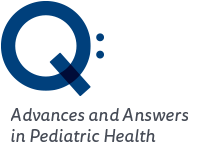- Doctors & Departments
-
Conditions & Advice
- Overview
- Conditions and Symptoms
- ¿Está enfermo su hijo?
- Parent Resources
- The Connection Journey
- Calma Un Bebé Que Llora
- Sports Articles
- Dosage Tables
- Baby Guide
-
Your Visit
- Overview
- Prepare for Your Visit
- Your Overnight Stay
- Send a Cheer Card
- Family and Patient Resources
- Patient Cost Estimate
- Insurance and Financial Resources
- Online Bill Pay
- Medical Records
- Política y procedimientos en el hospital
- Preguntamos Porque Nos Importa
-
Community
- Overview
- Addressing the Youth Mental Health Crisis
- Calendar of Events
- Child Health Advocacy
- Community Health
- Community Partners
- Corporate Relations
- Global Health
- Patient Advocacy
- Patient Stories
- Pediatric Affiliations
- Support Children’s Colorado
- Specialty Outreach Clinics
Your Support Matters
Upcoming Events
Colorado Hospitals Substance Exposed Newborn Quality Improvement Collaborative CHoSEN Conference (Hybrid)
lunes, 29 de abril de 2024The CHoSEN Collaborative is an effort to increase consistency in...
-
Research & Innovation
- Overview
- Pediatric Clinical Trials
- Q: Pediatric Health Advances
- Discoveries and Milestones
- Training and Internships
- Academic Affiliation
- Investigator Resources
- Funding Opportunities
- Center For Innovation
- Support Our Research
- Research Areas

It starts with a Q:
For the latest cutting-edge research, innovative collaborations and remarkable discoveries in child health, read stories from across all our areas of study in Q: Advances and Answers in Pediatric Health.


Cloaca Diagnosis and Treatment Decisions
Understanding anorectal malformations
Hearing that your baby has an anorectal malformation can be frightening. Anorectal malformations are defects that occur during the fifth to seventh week of fetal development. An anorectal malformation is a condition in which the anus (opening at the end of the large intestine through which stool passes) and the rectum (area of the large intestine just above the anus) do not develop properly.
Learn more about anorectal malformations
Our families discuss their diagnosis
Some women may learn that their baby has an anorectal malformation like cloaca during pregnancy, and some may not find out until after their baby is born. These families share how they found out their baby had cloaca and how they handled the news.
What is cloaca?
Cloaca is a malformation that affects the rectum and urogenital tract in females. Females are normally born with three perineal openings: urethra, vagina and anus. Children born with a cloacal anomaly only have one opening because the urethra, vagina and rectum are joined together as a common channel instead of three separate ones. The length of the common channel may vary between 1 cm and 10 cm.

Our surgical expertise
Our surgeons have specialized expertise in treating anorectal malformations, such as cloaca. Our team is led by Alberto Peña, MD, who transformed colorectal treatment by introducing the posterior sagittal anorectoplasty (PSARP), also known as the pull-through, procedure.

What are anorectal malformations?
An anorectal malformation, like cloaca, is a condition that affects a baby’s ability to have a bowel movement. Learn how we treat these conditions in our International Center for Colorectal Care.
600
Number of cloaca surgeries our doctors have performed
74
Number of countries Dr. Peña's patients come from
2,500+
Number of pull-through procedures our doctors have performed

"The important thing was that they diagnosed her and referred us to the right place."Sandy, Tashi's mom
Additional patient resources

Next: Repair and treatment
Our experienced family talks about their daughter's surgeries and how their family has managed through it all.

Read other inspiring stories about patients born with an anorectal malformation and how they persevered.

Our International Center for Colorectal and Urogenital Care is home to world-renowned surgeons, Alberto Peña, MD, and Andrea Bischoff, MD.

We’ve compiled helpful information, videos and links related to complex colorectal conditions and information about our support programs for families.

Partnership with the University of Colorado School of Medicine
Children's Hospital Colorado partners with the University of Colorado School of Medicine, where many of our physicians and care providers serve as faculty.



 720-777-0123
720-777-0123







